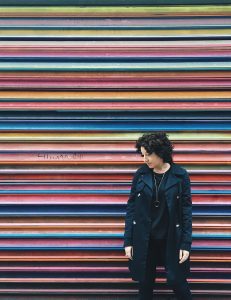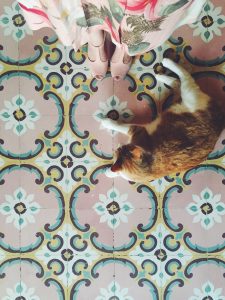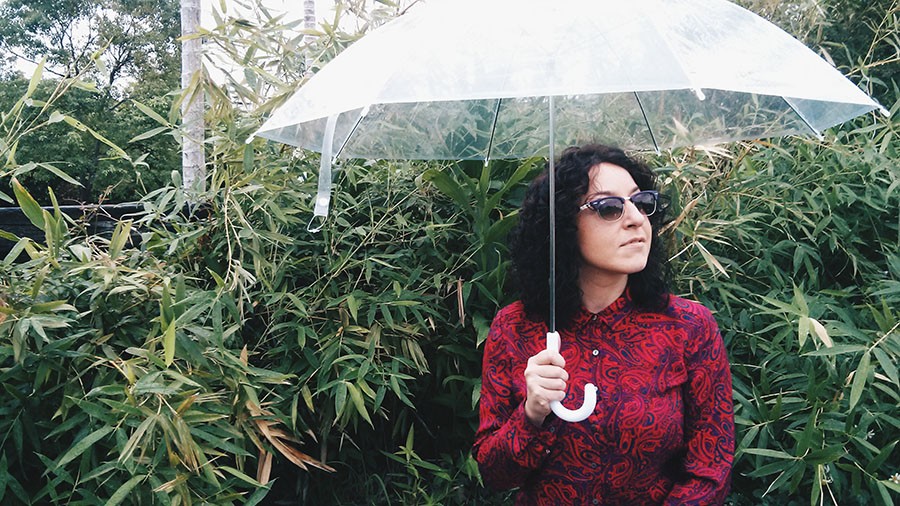While Lisa Gwen Baldacchino never specifically aspired to any of her roles at Malta’s Creative Europe Desk and beyond, she has always known her heart belongs in the creative sector. She speaks to Veronica Stivala about how it all started with panto, Seurat, and Cats: The Musical.
A light oak front door is framed by the bright hues of a magenta bougainvillea. An ageing iron door, painted white, is adorned with art deco glass patterns. A pale turquoise front door sits poised between two symmetrical windows, an imposing white balcony perched above. These are just some of the beautiful photos that form part of the collection of MaltaDoors, a whimsical social media project started by Lisa Gwen Baldacchino, but which has gained quite a steady following.
It comes as no surprise that she works in the arts. Her studies and career path have always followed this cultural line. To speak to Lisa is to speak to someone who not only loves the arts, specifically visual art, but to an individual who works tirelessly to see the discipline given due prominence in Malta. Appropriately then, Lisa is currently Head of the Creative Europe Desk in Malta, hosted within the Culture Directorate. Creative Europe is an EU programme which supports European cinema and the cultural and creative sectors through funding opportunities and organises events to bring the works to the public and give them due exposure.

One part of Lisa’s multi-faceted role sees her travel several times a year for official meetings to discuss policy and programme updates and collaborations. Her organisation also organises several events such as the Creative Europe Malta Desk Meeting and the Young Audience Film Day throughout the year to promote the programme and its funding schemes. ‘The job is demanding, yet challenging, and I’m happy to be kept on my toes,’ she confides.
Interestingly, Lisa admits that none of the roles she has held were roles she ever specifically aspired to. ‘My aspiration,’ she asserts, ‘has always been to work in the creative sector—which is where my heart belongs and the only sector I feel strongly passionate about.’
To truly understand Lisa’s relationship with the arts is to go back to her childhood. ‘I have my mother to thank,’ reveals Lisa. She was surrounded by books and paintings at home since the day she was born. From a very early age she was watching pantos and performances, attending rehearsals with her mother. ‘Then there were the travels,’ she muses. ‘I clearly remember being mesmerised by Seurat and the modern art section at the National Gallery. When you’re but a few feet tall, those paintings seem larger than life, and I was easily transported into the folds and layers of the works. The trip to London when I was five left a deep impression. I watched ballets, musicals—Cats being an all-time favourite. I visited places like the Barbican, which in hindsight might have contributed to my great love for Brutalist architecture.’
Years later, Lisa went on to read for a B.A. (Hons) in History of Art at the University of Malta. She followed that up with a stint as sub-editor and features writer at the Times of Malta, which served to set incredibly strong foundations for her career ahead. ‘I learnt so much,’ she recalls, ‘I never realised how well I could work against a deadline, nor how much I enjoyed writing and reacting to the happenings around me.’ These little epiphanies came in useful when she jumped into an M.A. in Cultural Heritage Management.
Lisa’s Master’s thesis explored the idea of having a permanent contemporary art space for Malta. Titled ‘Setting up a Modern/Contemporary Art Space in Malta’, Lisa explored the concept of having a permanent exhibition space in Malta. Indeed this issue remains a sorely-felt need. Several years have elapsed since her study, and while public infrastructure projects are in the pipeline, they remain distinctly elusive. This said, Lisa doesn’t think this limitation should stop artists in their tracks. ‘Exhibitions do not require strict museum or gallery spaces, just like bands and performers do not require stages or theatres,’ she says. Looking to the near future, she would like to see more pop-up spaces and galleries; ‘artists need to organise themselves, they need to start working together and set up artist-led spaces and organisations where strength not only lies in numbers but also in the diversity of the collective.’

But the lacunae don’t end there. Lisa does not mince her words when she addresses the gaps in higher education: ‘We need courses for arts managers and for tomorrow’s curators; courses on art writing and art criticism among others—it’s useless creating infrastructural projects when we do not have the human resources, the expertise required to drive those spaces forward. We have to do away with the ‘learn on the job’ mentality, and foster an environment of specialisation.’ This is not to say that Lisa doesn’t believe in reaching beyond the bounds of one’s ‘specialisation’.
Lisa has a number of projects outside of her work at the Creative Europe Desk. She is presently curating a touring show of visual artist Ritty Tacsum’s work in Brussels and working on an upcoming Bank of Valletta retrospective of artist Anton Calleja.
Of this exciting portfolio, Lisa explains how her highlight is most definitely the collaboration with the artist/s and the relationship that often evolves as a consequence. ‘Through much creative dialogue and engagement, one feeds off the other, and to a certain extent, I feel like I become enmeshed in the process and layers of the artwork.’ She confides how the difficult part is gaining the artist’s trust. ‘When I started out, 10 years ago, it was hard to be taken seriously. And although that aspect has dissolved, I still find that many artists like the ‘idea’ or notion of having a curator yet don’t really understand what the role entails.’
One of her own babies is MaltaDoors, a whimsical photography project based on social media, seeing her capture pretty, local facades she comes across.
It is consuming, it will leave you breathless, but every project is so rewarding—it will ensure that you sleep and wake up with a smile on your face.
‘I just love making sense of all the chaos,’ she comments. ‘Plus, I love playing local tourist, every day, always. I love exploring every little nook and cranny of this tiny island, which even after 30-something years in this world, I’ll admit to finding quite magical. Mine is almost a need to frame and isolate the most stunning details around me. Most of us just rush from one thing to another and in the process, we end up missing so much. This is my attempt to focus attention on those impeccable and perfect portions of the life surrounding us.’
Lisa goes on to reveal she wants to do something more with these doors: ‘I want to tell the story of the empty house, of the broken family, of the crazy cat village lady. Theirs are the stories I am interested in. The doors are an excuse—they are mere thresholds, entrances and exits, all at once creating opportunity yet providing obstacle.’ Since starting this project, she has made countless new friends and acquaintances from all over the world, some of whom have connected precisely because they wanted to tell their story.
So who is Lisa when she’s not working on any of her projects? Lisa laughs when she admits how she enjoys being at home, and actually enjoys cleaning, gardening and talking to her plants, and giving her cats Perry and Ginny some well-deserved attention. ‘I take pride in my space, and I made sure to surround myself with things that make me feel good, that remind me of the places I have been and the many special people who have shared or who share my life.’
When asked about her aspirations for the future, Lisa admits that while from the outside, it would appear that she is constantly involved in arts projects, she feels the needs to actually be creating, to be more engaged in creative outlets. Rather than focusing solely on supporting artists, she wants to be more involved creatively herself: ‘I don’t want to keep holding back; I want to engage.’
Lisa’s advice to someone pursuing a career in the arts world is to ‘go for it.’ While she warns that you must be prepared to make sacrifices, be prepared to volunteer or work for free, at least at the beginning and until you build your CV, she points out how the sector is a dynamic one, which is constantly evolving; there is no chance of getting comfortable or bored when you work in or for the arts. ‘It is consuming, it will leave you breathless, but every project is so rewarding—it will ensure that you sleep and wake up with a smile on your face. But you must really want it, and at times you need to be aggressive in your approach, because there are more than a few hungry sharks out there.’





Comments are closed for this article!